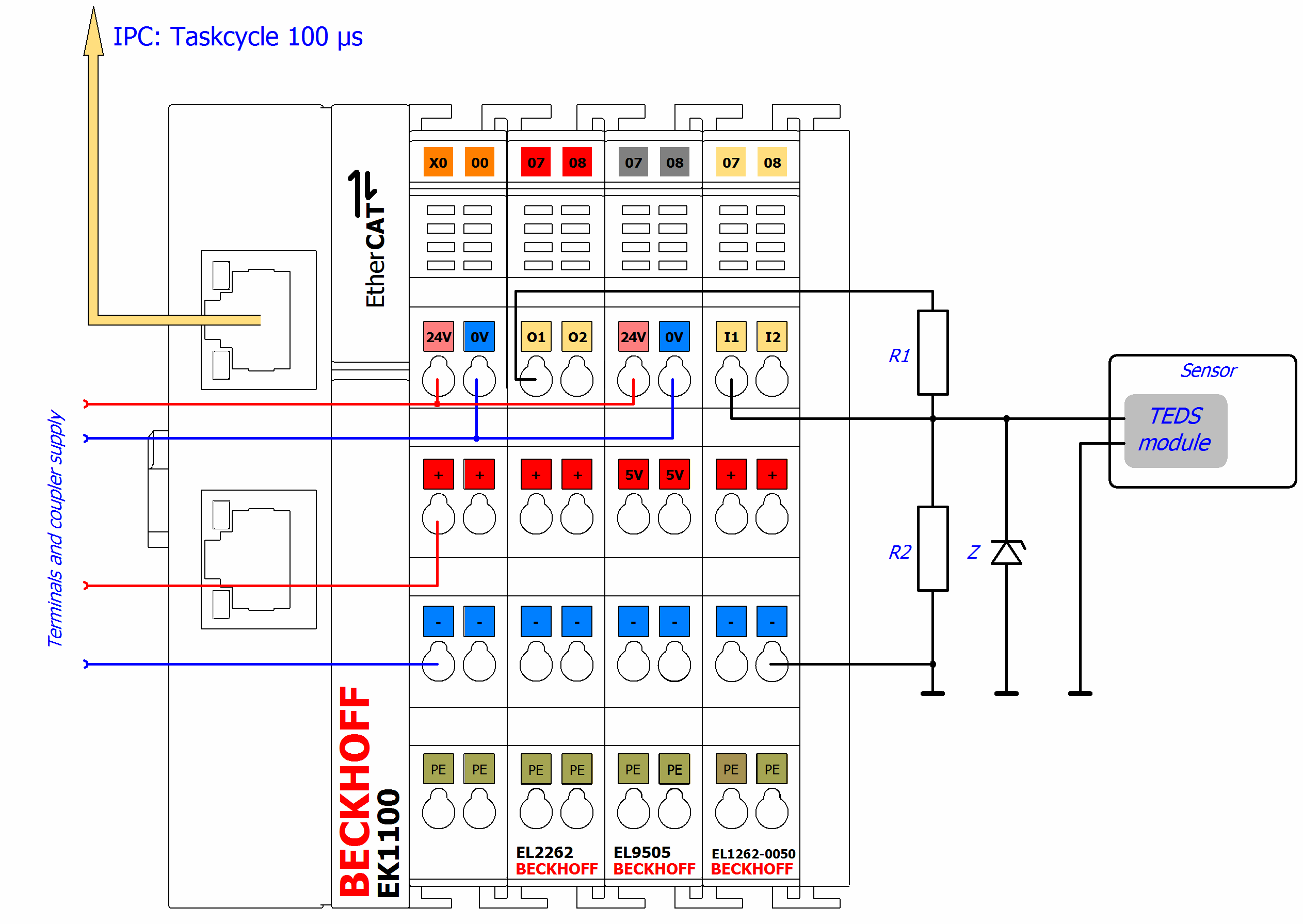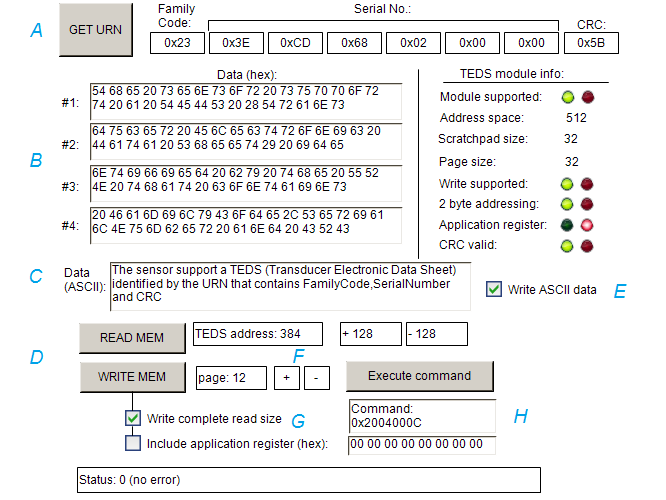Sample program 10 (reading and writing TEDS data)
Program description / function
This sample program illustrates how to read/write the data of a separate TEDS module (TEDS = Transducer Electronic Data Sheet). Such TEDS modules are available on the market for retrofitting sensors or actuators, in order to identify the device after installation or to read out specific data (calibration, manufacturer etc.). The device used in this example was an HBM TEDS 1−TEDS−BOARD−L, version 2018.
This sample program is expressly intended as a feasibility demonstration. Specifically, there is no claim to interoperability with any other TEDS modules. It is the responsibility of users to transfer the methods formulated here to their own implementations.
This demonstration does not cover TEDS modules that are integrated in the sensor and communicate on the sensor lines. This is common for IEPE (vibration) or strain gauges/measuring bridges. It is possible to connect an IEPE sensor equipped with TEDS to Beckhoff ELM3602/ELM3604 terminals.
The following configuration is required:
[EK1100] + [EL2262] + [EL9505] + [EL1262-0050] + EL9011
The configuration can control 2 TEDS modules. Only single-channel operation is shown in the example.
 Fig.220: Wiring for sample program 3
Fig.220: Wiring for sample program 3The voltage divider can be dimensioned with R1 = 2180 Ω (e.g. 680 Ω + 1500 Ω), R2 = 680 Ω and Z = 5.1 V for example.
Notes on the program (visualization)
First the URN has to be read (A). Only then are further functions available.
The program determines the URN for each bit by reinitializing the module, since the terminal for the input causes a time offset that is too large (see "Bit repeat count" at the top right).
Data can be written either by entering hexadecimal values (B) or a text string (ASCII) (C); hexadecimal values must be separated by spaces in the text field. Which of the two inputs is to be used for writing can be specified with the checkbox “Write ASCII data” (E):
 Fig.221: Visualization of the sample program for TEDS with EL1262-0050 and EL2262
Fig.221: Visualization of the sample program for TEDS with EL1262-0050 and EL2262The basic function after the identified URN is (D) reading (READ MEM) and writing (WRITE MEM) TEDS data. By issuing such a command, the associated command statement is generated in the text field (H) and can also be changed and then executed with "Execute command". Via +/- the TEDS address or page can be changed (F). Both the start address and "page" can be entered directly for read / write accesses.
The hexadecimal data (B) of text field #1 to #4 each represent 32 bytes of the total read/write buffer size of 128 bytes, as configured in the sample program. If the checkbox “Complete read size” (G) is unchecked, only text field #1 will be used for writing usually (except the module supports page sizes > 32 byte). Accordingly, only the first characters of the ASCII data text will be written. In any case, the number of bytes as a page of the TEDS module is configured will be used. Note, that the module usually supports write access to addresses of a multiple value of the page size only. For example, assuming a page size of 32 bytes and the address 234 is input, an error 0x35 ‘writing fail’ will occur by a WRITE MEM command; but if address 352 is used, this is valid and there is no error).
Selection of “Include application register” provides whether the application register shall be written or read additionally (G).
Download:
Program
See information about the TEDS feature of the ELM3xxx in section “ELM Features/ TEDS”.